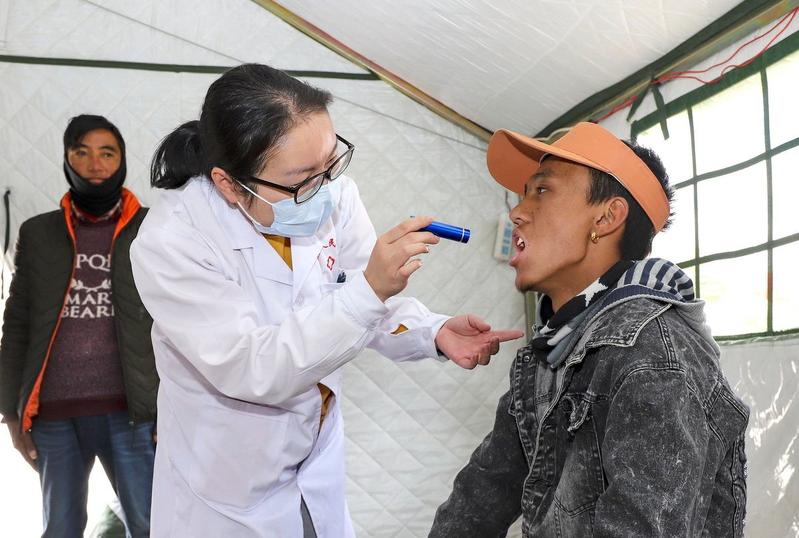 A doctor from Shaanxi province checks the throat of a man in Gar county, Ngari prefecture, Tibet autonomous region, in July. A medical team from Shaanxi provided medicine and services to villagers and soldiers on the border. (LIU XIAODONG / CHINA DAILY)
A doctor from Shaanxi province checks the throat of a man in Gar county, Ngari prefecture, Tibet autonomous region, in July. A medical team from Shaanxi provided medicine and services to villagers and soldiers on the border. (LIU XIAODONG / CHINA DAILY)
Medical assistance from across China has contributed to significant improvements in healthcare services and people's health in two autonomous regions over the past five years, the National Health Commission said on Tuesday.
Over the past five years, the medical assistance teams have provided training to more than 4,200 medical professionals at hospitals in Tibet
More than 900 medical professionals from top hospitals across China have been dispatched to the Tibet autonomous region and Xinjiang Uygur autonomous region every year over the past five years to provide assistance to local medical institutions, including 16 major hospitals and smaller county-level public hospitals, commission spokesman Mi Feng told a news conference in Beijing.
READ MORE: Medical aid website Shuidichou suspends offline consultants
Over the past five years, the medical assistance teams have provided training to more than 4,200 medical professionals at hospitals in Tibet, said Li Dachuan, the commission's deputy head of medical administration and supervision.
In Xinjiang, health professionals have provided training to about 9,700 physicians over the past five years.
Healthcare facilities in the two regions have also improved thanks to financial support from the central government. The 16 major hospitals in the two regions opened another 4,390 beds and bought more than 1,100 major pieces of medical equipment, Li said, adding that big new hospitals had also been built.
With efforts from local authorities in the two regions and from across China, the health of residents in the two regions has improved in recent years, with some key indicators seeing significant progress, he said.
Average life expectancy in Tibet has increased to 70.6 years, compared with 68.2 years in 2018, and in Xinjiang it is 74.4 years, up from 72, the commission said. Mortality rates of pregnant women and babies in the two regions are also decreasing, it said.
ALSO READ: Medical staff from across China provide medical aid for Wuhan
Gu Yingsu, deputy director of Xinjiang's regional health commission, said central government departments such as the National Health Commission and Ministry of Education had arranged for 777 highly qualified medical professionals from different provinces and cities to be sent to the region over the past five years to provide medical assistance.
In the eight major hospitals in Xinjiang that received assistance, healthcare services have seen great improvement, she said. For example, they conducted 53 percent more surgeries last year than in 2016, and the death rate in emergency and critical operations decreased from 0.73 percent to 0.51 percent.
The medical experts have hosted nearly 3,000 seminars on various topics over the past five years, Gu said, and conducted 882 voluntary medical diagnosis activities benefiting 93,300 local people.


